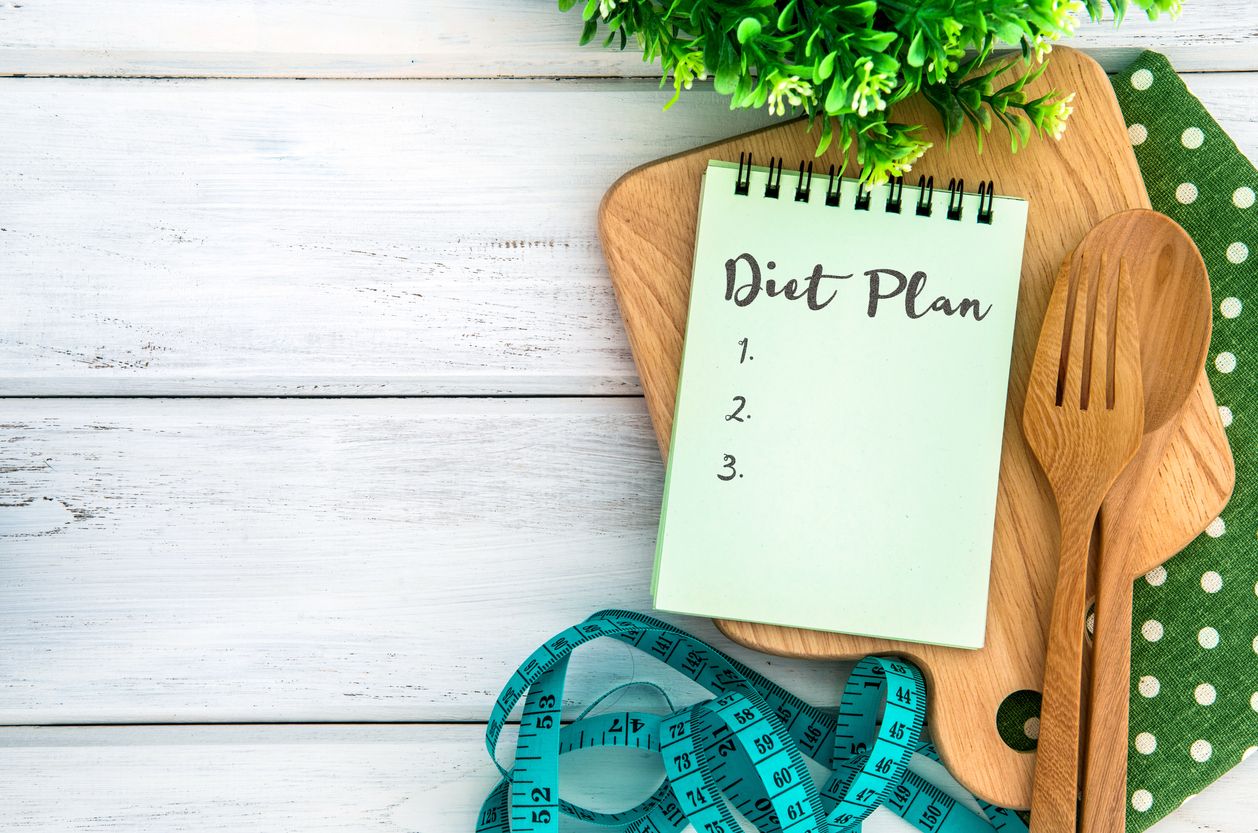Author: Natalie Ng|Updated: 27 May 2025
Want to get more out of your meals without changing everything you eat? The circadian rhythm diet plan might be the answer. It works by syncing your eating habits with your body’s internal clock. That means eating earlier in the day when your body is more efficient at using energy, and easing off as the evening sets in. Start with simple habits—like getting morning sunlight and eating your first meal around 7 AM. Aim to finish dinner by early evening and keep your eating window within 8 to 10 hours. These small changes help your body manage hunger, support healthy hormone levels, and improve how you burn fat. Your circadian rhythm does more than just guide your sleep cycle. It plays a big role in digestion, blood sugar, and metabolism. By following your body’s natural rhythm, you can support better insulin sensitivity, lower your calorie intake, and promote weight loss without needing to cut corners. This approach is closely linked to intermittent fasting and time restricted eating, but with more focus on timing meals to fit your internal body clock. Curious how it all works together? Keep reading—we’ll break it down step by step.

1. Meal Timing Supports Metabolic Health and Fat Burn

Eating earlier aligns with your body's internal clock
Your circadian rhythm influences how your body handles food throughout the day. This is regulated by internal circadian clocks, which coordinate various physiological processes in response to meal timing. By following a time restricted eating schedule that matches your body’s natural rhythms, you can support better energy use, glucose control, and fat metabolism.
Benefits of consuming food earlier in the day
• Improves insulin sensitivity: Your body responds best to food in the morning, especially between 7 and 9 AM, when insulin response is strongest. Key hormones involved in glucose regulation and appetite control, such as ghrelin and adiponectin, reach their peak secretion in the morning, making this the optimal time for food intake.
• Supports hormone regulation: Hunger and satiety hormones follow your circadian cycle. Early meals help keep them balanced throughout the day.
• Reduces evening calorie intake: Finishing dinner by 7 PM gives your body time to rest and repair, instead of processing food overnight.
• Helps regulate body temperature: Eating earlier can prevent rises in nighttime body temperature that may disrupt sleep.
• Supports better sleep quality: Avoiding late meals allows melatonin production to follow its normal rhythm, improving your sleep cycle.
Why meal timing affects fat storage
Late-night eating shifts your internal body clock and can lead to circadian misalignment, disrupting your body's natural circadian rhythm, which is essential for optimal metabolic function and hormone regulation. This disrupts hormone production, lowers glucose tolerance, and increases the risk of weight gain over time. Early time restricted eating helps avoid this pattern and keeps your metabolism working in sync with your circadian cycle.

2. Morning Light Exposure Regulates Hunger and Hormone Signals

Early light exposure supports your body’s internal clock
Morning sunlight helps set your circadian rhythm and supports hormone production that controls appetite and energy use. Light is one of the strongest external cues for your internal body clock, and getting it early in the day helps align your biological functions with natural cycles.
Hormonal benefits of morning light
• Boosts leptin production
Leptin is the hormone that tells your brain when you’re full. Higher leptin levels reduce the urge to overeat later in the day.
• Lowers ghrelin levels
Ghrelin is the hormone that signals hunger. Morning light exposure helps keep ghrelin levels from rising too early or too strongly.
• Balances cortisol output
Cortisol follows a natural curve. Stabilizing it early may reduce food cravings linked to stress and irregular eating habits. Morning light exposure also influences gene expression of clock genes, which helps regulate daily hormonal cycles and metabolic processes.
• Supports melatonin release later
Morning light helps trigger melatonin production at night, improving your sleep cycle, which also supports weight loss and insulin sensitivity.
Easy ways to add light into your routine
• Step outside with your morning coffee for 10–15 minutes
• Open your blinds and sit near a bright window
• Do light stretching or a short walk before 10 AM
Book Now to Experience
S6 Body Sculpting Treatment
1 Minute Self-Registration
Date should not be before minimal date

3. Time Restricted Eating Improves Fat Burning Efficiency
Strategic eating windows align with your circadian rhythm
Your body naturally burns fat more efficiently during the day. Eating within a set time frame—also called time restricted eating—can help you use this rhythm to your advantage. In addition to supporting your central circadian clock, this approach helps synchronize peripheral clocks in organs and tissues, further supporting metabolic health. This method supports your internal clocks, improves glucose control, and reduces excess energy intake.
How eating windows affect fat oxidation
Improves metabolic response during daylight hours
Your circadian rhythm boosts metabolic activity earlier in the day, so eating during this period encourages better energy use and fat burn.
Extends nighttime fasting for fat tissue breakdown
Finishing meals earlier allows your body to switch from storing energy to using stored fat during sleep.
Supports hormonal changes that promote weight loss
Time restricted eating improves hormone levels related to hunger, satiety, and fat metabolism, especially when your last meal is at least 3 hours before bedtime. Recent research suggests that time restricted eating can enhance fat metabolism and support long-term weight management.
How to apply this to your eating schedule
• Start with a 12-hour eating window (e.g. 8 AM–8 PM)
• Gradually shorten it to 10 or 8 hours as it feels manageable
• Begin your first meal 2–3 hours after waking
• Avoid late evening meals to support your body’s natural repair cycle

4. Nighttime Fasting Supports Cellular Repair and Hormonal Balance
Fasting after dark activates the body’s natural repair processes
Your body enters a maintenance phase during the night. Extending the time between your last evening meal and your first morning meal allows this repair cycle to run without interruption. This period of nighttime fasting supports metabolic health, reduces inflammation, and promotes healthy aging.
Key benefits of nighttime fasting
Triggers autophagy for cellular cleanup
Autophagy helps remove damaged cell components and supports cell renewal during sleep.
Boosts growth hormone secretion
Growth hormone peaks at night and plays a key role in repairing tissues, building muscle, and maintaining lean mass.
Reduces inflammation markers
A longer fasting window allows your body to lower inflammation levels, which supports recovery and overall health. Lowering inflammation through nighttime fasting may also reduce the risk of chronic conditions such as heart disease.
Improves insulin sensitivity the next day
Giving your digestive system a break overnight can improve glucose control and reduce insulin resistance over time.
How to practice nighttime fasting
• Aim to finish your last meal at least 3 hours before bedtime
• Start with a 12-hour fasting window (e.g. 7 PM to 7 AM)
• Gradually extend fasting time as your routine allows
• Move dinner earlier by 30 minutes each week if needed

5. Protein Timing Supports Daily Muscle Recovery and Fat Use
Distributing protein intake helps match your body's repair cycle
Your body repairs and rebuilds tissue at specific times of day, guided by your internal clock. Eating protein when your body is most receptive—especially in the morning and after physical activity—helps support muscle recovery and may enhance fat metabolism.
How protein timing supports the circadian rhythm
Morning protein intake supports metabolic function
Your body is primed to absorb nutrients after waking. Eating 20–30 grams of protein at breakfast can support muscle preservation and help manage appetite throughout the day. How protein timing supports the circadian rhythm: Consuming protein at optimal times helps regulate circadian rhythms, which control muscle repair, metabolism, and hormone production.
Post-exercise protein boosts recovery
Within an hour of physical activity, your muscles are more responsive to protein. Eating a protein-rich meal or snack during this window helps muscle repair and supports healthy body composition.
Spreading protein evenly stabilizes energy level
Instead of loading all your protein at dinner, having moderate amounts throughout the day avoids energy dips and supports balanced hormone levels related to satiety and glucose control.
Easy ways to structure daily protein intake
• Include eggs, Greek yogurt, or tofu at breakfast
• Plan lunch with lean meats, legumes, or fish
• Use a protein-rich snack after exercise (e.g. cottage cheese or a protein shake)
Book Now to Experience
S6 Body Sculpting Treatment
1 Minute Self-Registration
Date should not be before minimal date

6. Carbohydrate Timing Helps Balance Energy and Blood Sugar
Matching carb intake with your circadian cycle supports energy and glucose control
Your body processes carbohydrates differently depending on the time of day. Eating more carbs earlier, when insulin sensitivity is higher, helps regulate blood sugar and prevents excess energy from being stored as fat. When the metabolic response to carbs is evaluated in the morning compared to the evening, studies show that glucose control and energy utilization are significantly better in the morning. This timing also supports better energy balance and improved metabolic health.
How timing your carbs improves daily performance
• Morning carbs support energy output
Slow-digesting carbs like oats or whole grains provide fuel for physical and mental tasks earlier in the day, when your body uses energy more efficiently.
• Midday carbs prevent fatigue
Moderate portions of complex carbs at lunch help maintain steady energy without blood sugar spikes or crashes.
• Lower carb intake in the evening
Reducing carbohydrate intake at dinner allows your metabolism to wind down and reduces the chance of glucose being stored as fat during sleep.
• Fiber-rich carbs support blood sugar control
Vegetables and whole grains slow digestion, reduce blood sugar spikes, and support your digestive health throughout the day.
Simple ways to adjust your carb intake
• Choose oats or sweet potatoes in the morning
• Include quinoa, legumes, or brown rice at lunch
• Keep dinner lower in starch and focus on non-starchy vegetables

7. Meal Sequence Affects Digestion and Blood Sugar Stability
The order you eat your food influences digestion and glucose response
Your digestive system handles nutrients more efficiently when foods are eaten in a certain sequence. Following this order helps regulate blood sugar levels, reduces insulin spikes, and may support long-term weight loss. This strategy works well with your body’s circadian rhythm and improves overall digestive function. Additionally, following an optimal meal sequence can help regulate sleep-wake cycles by supporting stable blood sugar and hormone levels throughout the day.
How meal order supports metabolic health
• Start with fiber-rich vegetables
Vegetables act as a buffer by slowing the digestion of carbohydrates. This reduces the speed at which glucose enters your bloodstream.
• Follow with protein
Protein takes longer to digest and helps trigger satiety hormones. Eating it second ensures better nutrient absorption and steadier energy levels.
• Finish with carbohydrates
Saving carbs for last minimizes blood sugar spikes and helps regulate insulin levels, especially when paired with earlier fiber and protein.
Tips to apply this sequence
• Begin meals with a salad or steamed greens
• Include lean protein like fish, chicken, or legumes as your second portion
• Save complex carbs like rice or sweet potatoes for the end of your meal
• Wait a few minutes between food groups if possible, to support digestion
This eating pattern works with your internal clocks and digestive rhythms, helping maintain a healthy body mass index, improve glucose control, and support overall health.

Circadian Rhythm Improves Sleep Quality and Weight Control
Eating in sync with your biological clock supports better rest
The timing of your meals can influence the quality of your sleep. Aligning your eating schedule with your circadian rhythm can help improve sleep by supporting natural hormone cycles. Late-night eating may disrupt your body’s ability to wind down, raising your body temperature and delaying the natural release of melatonin—the hormone responsible for sleep.
How eating habits affect your sleep cycle
• Avoiding late meals supports melatonin releaseYour circadian rhythm signals melatonin production in the evening. Eating too close to bedtime can interfere with this process.
• Nighttime fasting lowers body temperature
Digesting food raises your body temperature. Giving your system a break before bed helps lower it, which is necessary for falling asleep and staying asleep.
Better sleep supports hormone balance
Poor sleep affects hormone levels like leptin, ghrelin, and cortisol—making it harder to manage hunger, cravings, and energy intake the next day. Optimizing meal timing and content can further improve sleep quality, leading to better overall health.
What supports better sleep and weight balance
• Finish your last meal 2–3 hours before bed
• Choose lighter, lower-carb dinners
• Keep a regular eating schedule to support your sleep-wake cycle
Aligning your meal timing with your internal body clock improves sleep quality, which supports healthy hormone regulation and long-term weight control.
Book Now to Experience
S6 Body Sculpting Treatment
1 Minute Self-Registration
Date should not be before minimal date

Circadian Diet vs. Other Eating Patterns
How the circadian rhythm diet plan compares to other approaches
While many diets focus on calorie intake or food groups, the circadian diet focuses on timing. This approach is designed to work in harmony with the natural biological rhythms of the human body, supporting optimal health and metabolic function. It shares features with popular eating patterns like intermittent fasting and time restricted eating but centers more around your body’s internal signals and daily hormonal rhythms.
Key comparisons
Intermittent fasting
Intermittent fasting typically focuses on when you eat and fast, but not always in line with your circadian rhythm. The circadian approach prioritizes early time restricted eating to support metabolic health and energy balance.
Low-carb diets
These focus on reducing carbohydrate intake, but don’t consider how your body processes food at different times. The circadian rhythm diet allows for carbs—just earlier in the day when insulin sensitivity is stronger.
Calorie-counting approaches
While tracking calories can support weight loss, the circadian rhythm plan works with your body’s natural hunger and energy patterns to reduce overeating without strict logging.
Flexible eating
Flexible diets allow all foods in moderation, which can be helpful. The circadian diet complements this by helping you decide when to eat based on your internal clocks.
By focusing on both meal timing and your body’s physiological processes, the circadian rhythm diet supports long-term health without the need for heavy restriction. This approach offers unique health benefits by aligning eating patterns with the body's internal clock.

Support Fat Loss with Targeted Treatments Like S6 Body Sculpting
Even with a regular eating schedule that follows your circadian rhythm, some areas of fat tend to linger. This is especially true for stubborn fat in the belly, thighs, arms, or lower back—areas that don’t always respond well to calorie restriction, exercise, or early time restricted eating. That’s where targeted body contouring treatments like S6 Body Sculpting can offer extra support.
What is S6 Body Sculpting Treatment?
S6 Body Sculpting Treatment is a non-invasive body contouring therapy designed to reduce fat in specific problem areas. It uses low-energy bio-laser technology combined with vacuum suction to break down subcutaneous fat while improving skin firmness. The laser energy penetrates deep into fat layers, releasing fatty acids that are then processed through natural lymphatic drainage. At the same time, the treatment stimulates collagen production—supporting firmer, tighter skin after fat loss.
This makes it a strong companion to circadian rhythm fasting and time restricted eating, where fat metabolism is already activated during longer overnight fasting windows. While the circadian diet helps regulate insulin sensitivity, calorie intake, and glucose control, the S6 treatment enhances these benefits by directly addressing localized fat deposits and promoting better body shaping.
How S6 Body Sculpting Works
• Fat breakdown using low-energy bio-laser
Targets fat cells in the subcutaneous layer, breaking them down without damaging surrounding tissue
• Vacuum suction to support lymphatic drainage
Helps expel fatty acids released during the laser phase, supporting a faster metabolic response
• Boosts skin firmness
Stimulates collagen production, preventing sagging after fat reduction
• Non-surgical and safe for various body types
No incisions, injections, or recovery time required
Why combine it with the circadian rhythm diet plan?
• Enhances fat loss in areas that resist diet and time restricted feeding
• Supports skin tightening while body mass index improves through improved eating patterns
• Complements the body’s natural rhythms for fat breakdown and hormone balance
• Encourages better outcomes when used alongside intermittent fasting or circadian rhythm-aligned eating habits
• Especially beneficial for individuals with night shift work, who may face greater challenges with metabolic health due to disrupted circadian rhythms; combining the circadian rhythm diet plan with targeted treatments can help mitigate these effects
Whether you’re following a circadian rhythm diet plan to support weight loss, improve metabolic health, or balance your hormone levels, treatments like S6 Body Sculpting can help address the areas that are harder to target with food timing alone.
Book your consultation today to see how S6 Body Sculpting can support your fat loss goals and help you shape your ideal body—on your terms.
Book Now to Experience
S6 Body Sculpting Treatment
1 Minute Self-Registration
Date should not be before minimal date
FAQ
What ingredients should I avoid if I have oily skin?
If you have oily skin or experience frequent acne breakouts, avoid products with ingredients like mineral oil, lanolin, and alcohol-based formulations. These can either clog pores or strip the skin, causing sebaceous glands to increase sebum production in response. Also avoid heavy fragrances and comedogenic oils such as coconut oil, which can worsen clogged pores. Always check for labels that say non-comedogenic or oil free to help control oily skin and reduce the risk of breakouts.
Can stress increase sebum production?
Yes. When you're under stress, the adrenal glands produce more cortisol, which can indirectly stimulate sebaceous glands to produce more sebum. This often leads to increased oil on the skin’s surface and a higher risk of clogged pores and acne vulgaris. Managing daily stress and supporting the skin with a balanced skincare routine can help reduce the impact of internal stress on skin health.
Is oily skin more prone to aging or wrinkles?
Oily skin generally shows signs of aging more slowly than dry skin, mainly because the natural oils help maintain skin elasticity and hydration. However, oily skin is more prone to enlarged pores, uneven texture, and acne scarring. While sebum provides some natural protection, it's still important to protect oily skin from UV damage, pollution, and dehydration to maintain long-term skin health.
How can I reduce shine throughout the day without over-cleansing?
To reduce shine without causing irritation or triggering more oil, use blotting papers during the day to absorb excess oil without disrupting the skin barrier. You can also use lightweight mattifying primers or setting powders designed for oily skin. Avoid over-cleansing, as this can strip the skin and lead to increased sebum production. Focus on gentle cleansing and keeping the skin hydrated to maintain oil control across the skin’s surface.
Do oral contraceptives help with oily skin?
In some cases, oral contraceptives are prescribed to help regulate hormones that affect sebum production. By adjusting hormone levels, they can reduce the activity of sebaceous glands and help treat oily skin and acne vulgaris. These medications may not be suitable for everyone and should only be used under medical supervision. If hormonal imbalance is suspected to contribute to increased oil production, this can be a treatment option discussed with a healthcare provider.
Recommended Articles
COPYRIGHT© NEW BEAUTY MANAGEMENT LIMITED 2025. ALL RIGHT RESERVED.




